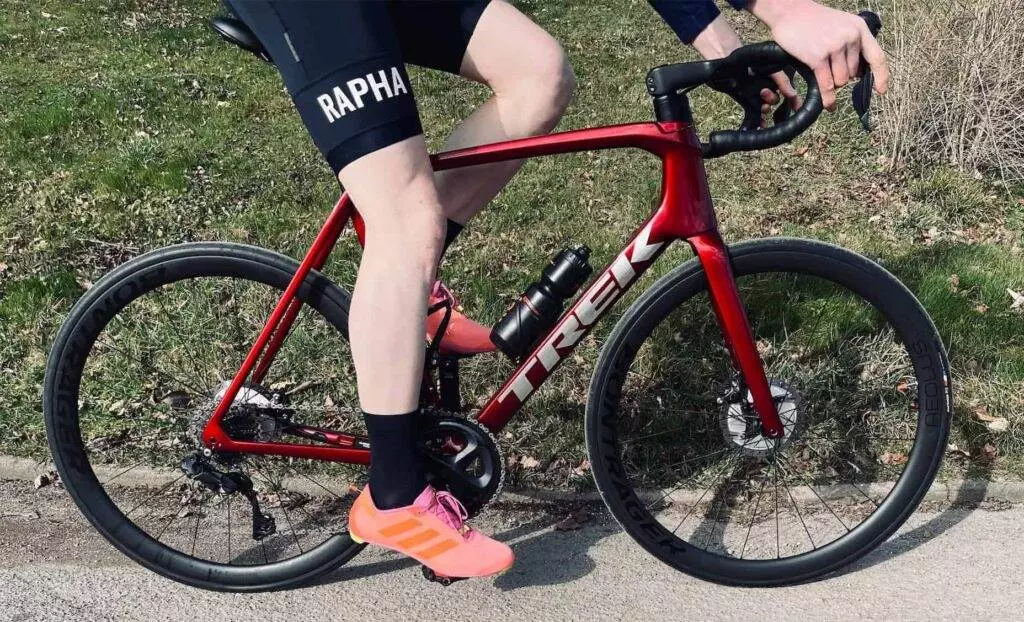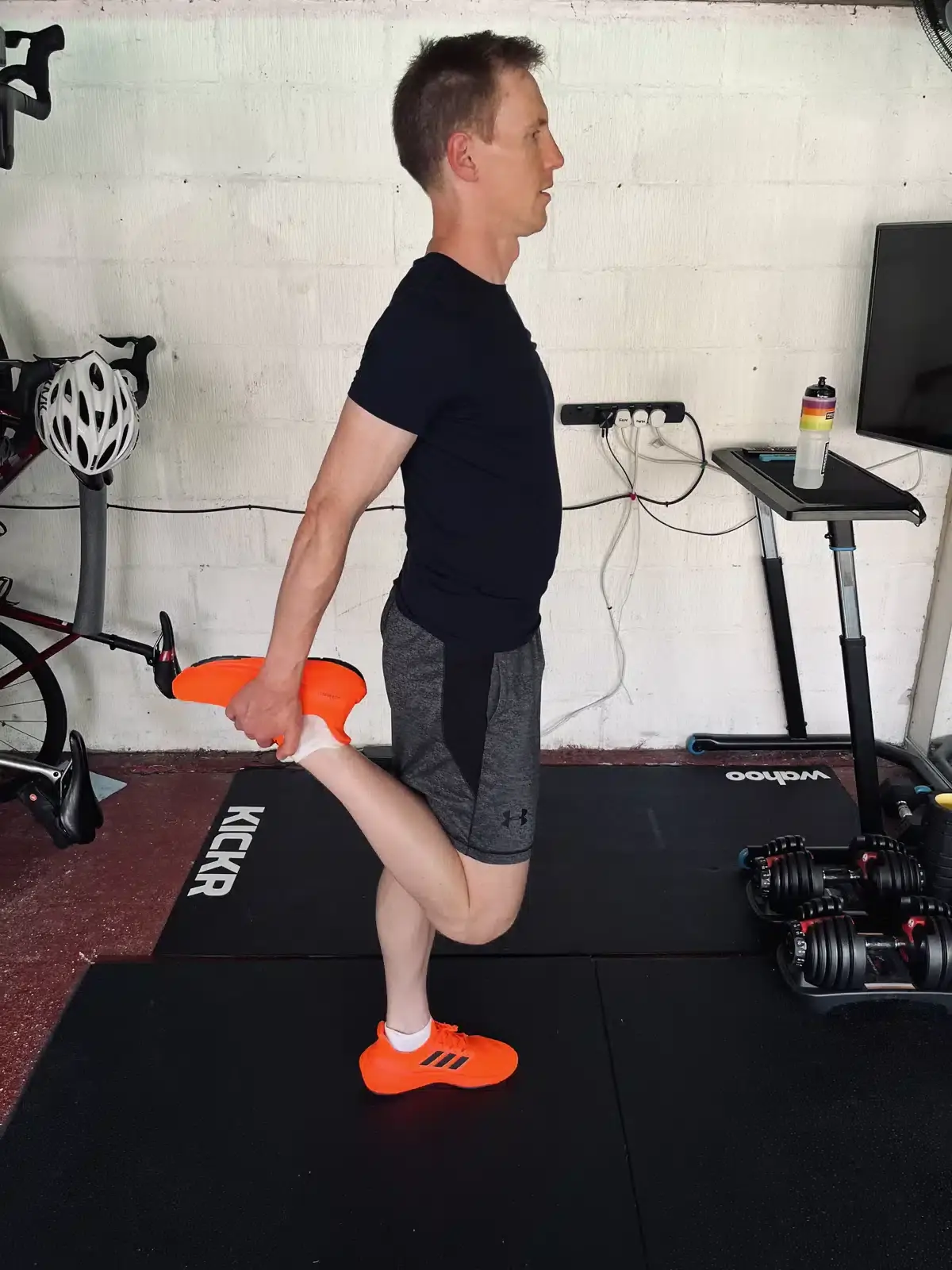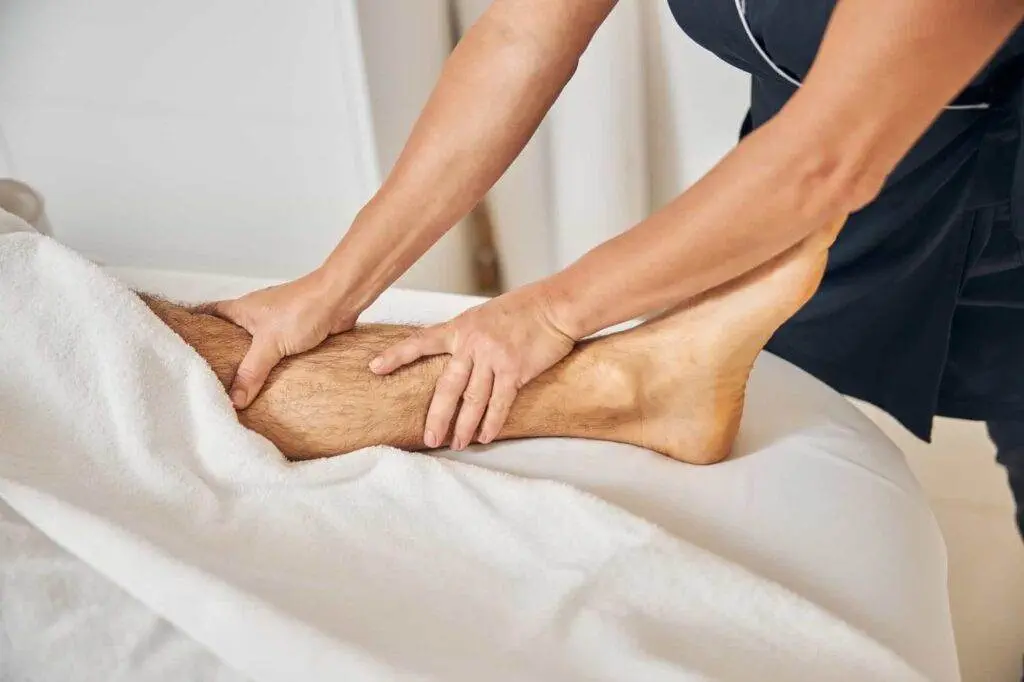It’s time to say goodbye to those achy, sore muscles, and hello to faster recovery!
Whether you enjoy a weekly pedaling session or have just started getting into cycling, you’ve probably experienced muscle soreness. Painful legs aren’t fun and can make you feel discouraged after cycling, but there are ways to hasten the recovery process.
Your ability to perform at your best can be limited by post-ride discomfort and even knee pain brought on by exercise-induced muscle damage.
You can reduce discomfort, improve blood flow, and speed up your healing using various recovery methods.
In this guide, we’ll look at a range of techniques on how to relieve leg pain after cycling. So, get ready for healthier, happier legs!

Key Takeaways: How To Relieve Leg Pain After Cycling
- Stretching helps to prevent injuries and reduces muscle pain.
- Apply ice and elevate your legs to lessen muscle soreness.
- Keep hydrated and rest well to recover faster.
- Make sure your meals have plenty of protein and carbohydrates.
- Consult a healthcare professional if the discomfort persists or becomes severe.
1. Stretching
Delayed onset muscle soreness (DOMS) is a major issue for cyclists. DOMS is caused by lactic acid build-up that causes sore, burning sensations.
But scratch all of that – stretching is a great tool for restoring muscle function after a workout. You should do stretching exercises that engage both the upper and lower body. Here are a few basic stretches to try after hopping off the bike:
- Quads: Stand tall, and move your right foot toward your glutes while gripping your right ankle with your right hand. When you feel your upper thigh begin to tense, slowly lift your foot up. Let your muscle stretch for 30 seconds before switching sides.
- Hamstrings: Sit down with your legs in front of you on the floor. Keeping a straight back, aim to touch your toes as you reach forwards. Feel the strain in the back of your thighs, and hold the stretch for 20 to 30 seconds.
- Calves: Push against a wall with your hands. Keep your right leg forward and step back with your left leg. Ensure you keep your heel down as you move, and that your right knee is bent. Once you feel the tightness in your left calf, lean forward and hold it for 20-30 seconds. Then switch to your other leg.
- Upper body: Stretch by standing and extending your arms above your head. Face your palms upwards. Leaning slightly to one side and hold the pose for 20 to 30 seconds. Then shift to the other side.
The human body can be a mystery, especially when you experience DOMS. The muscle damage appears seemingly out of nowhere. Stretching is one of the best methods to prevent DOMS for cyclists.

2. Massage
It’s time to work those knots out! Massage is a great way to target delayed onset muscle soreness after parking the bike. Massage helps clear lactic acid, and is just a great, relaxing activity.
A foam roller works well for self-massage in active recovery. Gently roll over muscles where you feel discomfort; this is helpful in releasing tension after training.
Massage allows you to focus on recovering both physically and mentally after your ride, and get yourself back to peak performance.

3. Ice
Ice is a simple yet effective way to soothe tight muscles after cycling. It’s crucial to give your muscle fibers time to heal after a strenuous ride. Ice can be applied to sore muscles to relieve discomfort, numb the area, and minimize swelling.
Ice also draws more blood to the area (in an attempt to heat it up), which is beneficial for the muscles.
Wrap an ice pack in a towel and hold it to any painful or tight muscles for fifteen minutes. This can help to limit DOMS after any physical activity.
4. Elevation
Elevate your legs for a fast recovery after spending some time on the road cycling. Raising your legs helps with healthier blood flow and reduces muscular swelling. Find a comfy spot at home to stretch out and put your feet up! It’s a great excuse to sit back and binge on Netflix after a tough training session.
5. Hydration
Drinking that sweet H2O is important for your recovery after a challenging ride, just like the pros in the Tour de France. When you cycle, it’s easy to become dehydrated without noticing. Sipping on some water or sports drinks will provide your muscles with electrolytes to keep you going. Try dropping a nuun hydration tab into the bottle to replace lost electrolytes.

6. Rest
Rest is a great way to ease muscle soreness after a workout and guarantee a quick recovery. Having a little lie down can certainly help if you’re experiencing aches and cramps after cycling. Don’t feel guilty about taking a short nap during the day; it can also reduce stress.
Consider using compression garments when you’re chilling out to improve blood circulation and give your muscles extra support.
7. Nutrition
The right food can work wonders for your sore body after a strenuous workout. You can give yourself the vital nutrition you need for recuperation with a balanced post-ride meal. Choose meals that have a lot of protein like fish, eggs, and plant-based alternatives. Don’t forget about carbs; whole grains or fruits work well to restore your energy after exercise.

Next Steps: Consult With A Healthcare Professional If The Leg Pain Persists Or Becomes Severe
Seeking professional advice is usually the best course of action when discomfort persists. They have the training and expertise to share insightful information, whether they are sports physicians, physical therapists, or other specialists.
You can create a customized plan for relief after exercise by speaking with a healthcare expert, especially those connected to reputable associations like the American College of Sports Medicine. For more wellness tips, check out the Pedallers health guides.
FAQs
How long does it take for your legs to recover after cycling?
After an especially intense cycling session, it’s important that you get enough rest. It will take between one and three days for your legs to recover.
Is it normal for my legs to hurt after biking?
If you spend a lot of time cycling, it’s normal for your legs to hurt afterward – occasionally. This pain will generally only last between one and three days, and you can ease it by stretching, going for light walks, or doing some easy yoga.
How do you drain lactic acid from your legs cycling?
Slowing down your cycling after intense exercise can help reduce lactic acid. Massage is also quite effective for relieving the discomfort. You should always do a light cool-down session after intense exercise.
